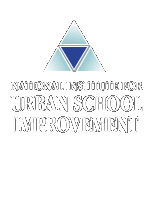
---

---

---

---

---

---

|
 |
 |
NIUSI
part of the Education Reform Networks
Friendship
-
1999 Notable Books for a Global Society: A K-12 list
Offers brief descriptions of 25 recent outstanding books (fiction, nonfiction, and poetry written for children in grades K-12 and published in 1998) chosen for the 1999 list of Notable Books for a Global Society. Notes that these books celebrate the diversity and common bonds of humanity.
-
A Self-Study in Teacher Education: Collective Reflection as Negotiated Meaning
This self-study highlights two teacher educators' evolving collaborative relationship, viewed within the larger research study of their praxis in teaching. It is part of a multi-layered research methodology, developed to inquire into graduate preservice teachers' understandings of multicultural education.
-
Beautiful Me! Celebrating Diversity through Literature and Art
Describes the "Beautiful Me!" kindergarten unit, which uses children's literature to help children develop a rich vocabulary to describe themselves, their friends, and family, and to avoid words placing people into categories and stereotypes. Activities include providing various skin-tone crayons for drawing and using craft materials to depict hair with different textures, colors, and thickness.
-
Bridging the Gap: A School Based Staff Development Model that Bridges the Gap from Research to Practice
Previous research suggests that without on going support teachers do not successfully implement instructional strategies learned during inservice training. The purpose of this study was to evaluate the effectiveness of the Research Lead Teacher model in providing support to general education teachers who were learning and implementing a strategy instruction process in their classrooms.
-
Building Bridges: A Peace Corps Classroom Guide to Cross-Cultural Understanding.
Understanding the concept of culture helps people live with others of different backgrounds within the classroom, the local community, and the worldwide scale of political, social, and economic interaction. The lessons presented in this book help students begin to more fully understand their own culture and how it has shaped them; to understand the perspectives of other cultures; and to provide an increased awareness of the value and practicality of social service within and beyond the bounds of schools.
-
Building Cross-Cultural Bridges--Cultural Analysis of Critical Incidents
Culture forms the basis for cross-cultural awareness and understanding. The initial response to a new culture is to find it fascinating, exotic, and thrilling.
-
Creativity and Collaborative Learning: The Practical Guide to Empowering Students, Teachers, and Families. Second Edition
These 24 papers explain how using the collaborative learning model can help teachers address classroom challenges.
-
Culturally Sensitive Strategies for Violence Prevention
Discusses cultural influences on behavior, theoretical assumptions about culturally diverse students, and culturally sensitive behavior management strategies that educators might consider in their efforts to curtail school violence. The strategies are intended to be culture-specific and culture-fair, to humanize school environments, and to encourage a sense of community and collective responsibility.
-
Differentiating cooperative learning
Encourages teachers to implement cooperative learning more thoughtfully and differentiate tasks within the group to personalize learning for each student. Challenging individual students to appreciate their peers’ diverse competencies and experiences leads to educational equity.
-
English-Teaching Institutions in Pakistan
Discusses English medium teaching in Pakistan and suggests that at the moment it is an elitist preserve and a stumbling block for Pakistanis not taught through English. Indicates that exposing other students to English could counteract growing cultural and religious intolerance in Pakistan.
-
Enrich Your Kindergarten Program with a Cross-Cultural Connection
Describes a pen pal connection between a New Jersey kindergarten class and an Alaskan Eskimo first-grade class. Details how they used monthly e-mail and regular mail, and exchanged class projects to heighten respect and understanding about others' cultures.
-
Examining the Relationship among Opportunity, Inclusion, and Choice
Describes the multicultural language practices used at Western Hills Elementary School in Denver, Colorado. Discusses social and cultural dimensions of learning and their relationships to second language acquisition.
-
Exploring Values through Literature, Multimedia, and Literacy Events: Making Connections
The essays collected in this book highlight the important links among home, school, and global society that will help students understand one another and contribute to a cohesive community. They describe the work of educators and children, and the materials and strategies they use to explore values such as compassion, caring, sharing, respect, and appreciation of cultural differences.
-
Growing Partnerships for Rural Special Education. Conference Proceedings (San Diego, California, March 29-31, 2001).
The 2001 conference proceedings of the American Council on Rural Special Education (ACRES) contains 62 papers and summaries of presentations concerned with issues in rural special education. The papers are presented in 12 categories: impacting governmental policy, at risk, collaborative education models, early childhood, gifted, multicultural, parents and families, preservice and inservice teacher education, technology, transition, and other.
-
Kaleidoscope: A Multicultural Booklist for Grades K-8. Fourth Edition. NCTE Bibliography Series
The fourth edition of this annotated bibliography collection offers students, teachers, and librarians a helpful guide to the best multicultural literature (published from 1999 to 2001) for elementary and middle school readers.
-
L'enseignement de la diversite culturelle, c'est une responsabilite collective (The Teaching of Cultural Pluralism, a Collective Responsibility)
Following September 11, some students in a computer-assisted journalism lab in Canada made disgraceful comments based on ignorance and misinformation regarding the school's Arabic-speaking members. However, a few articles and two news reports helped change the atmosphere as students began to recognize the individuals within stereotyped groups.
-
Meeting the Needs of English Language Learners
Presents key questions reflecting research in first/second language acquisition and whole language principles: is curriculum organized around "big" questions?; are students involved in authentic reading and writing?; are students given choices?; is content meaningful?; do students work collaboratively?; do students read, write, speak, and listen during learning?; are students' primary languages and cultures valued?; and do learning activities build self-esteem? (RS).
-
Motivating People from Privileged Groups to Support Social Justice
Presents a theoretical perspective for understanding what may motivate people from privileged groups to support diversity and social justice, discussing and examining the complexities and limitations of three main sources of motivation: empathy, moral and spiritual values, and self-interest. Educational strategies are suggested to address these sources of motivation.
-
Moving Marginalized Students Inside the Lines: Cultural Differences in Classrooms
Discusses what the author has learned in her job at an elementary school in Northeast Mississippi as liaison between English-speaking school personnel and Spanish-speaking students and parents, most of whom are recent immigrants from Mexico. Discusses what the author learned, through extensive talking and questioning of students and parents, about how cultural differences affect classroom activities and interaction.
-
Peer acceptance of included students with disabilities as a function of severity of disability and classroom composition.
Students with mild or “hidden” disabilities are more accepted by their non-disabled peers. The greater the perception of disability, the lower the acceptance rating.
-
Prejudice and Pride: Japanese Americans in the Young Adult Novels of Yoshiko Uchida
Discusses five books for young adults by author Yoshiko Uchida. Notes that these books, accessible to children in grades 5 and above, describe the prejudice against Japanese Americans, internment camps, and upheaval, sorrow, and anger spawned by the American government's racist actions.
-
Safeguarding Our Children: An Action Guide
-
The Development of a Cultural Assessment Tool: Paving the Way to a Culturally Comfortable Classroom
In a multicultural classroom it is the seemingly small issues, such as classroom informality or interpersonal relationships between male and female students, that can cause misunderstandings and problems. This paper delineates a simple assessment tool to determine what behaviors might be a source of potential discomfort in the classroom.
-
The Fight Free Classroom
Describes implementation of the Fight Free Classroom intervention (designed to decrease fighting and aggressiveness by helping students take ownership of their behavior) in an urban elementary school that included students with emotional and behavioral disorders (EBD). Overall, aggressive acts among students with and without EBD decreased immediately after participation in the intervention.
-
The Values of a Global Perspective
Asserts that college curricula, student activity programs, and institutional partnerships should each work toward the goal of promoting multicultural awareness. States that, as the nations of the world become more accessible to one another, students must learn to live comfortably with other peoples and cultures, and that teachers are instrumental in opening students' minds to this prospect.
-
Tools for Tapping an Intercultural Gold Mine: Integrating International Staff into Your Camp Program
International camp counselors can enhance the camp environment and improve marketability. Guidelines for achieving a mutually beneficial international camp experience include hiring staff from a variety of countries, establishing a relationship before arrival, actively incorporating international staff into the camp community, incorporating international activities into the routine, including support staff in all-camp activities, and developing a buddy system.
|
| |
 |
|





